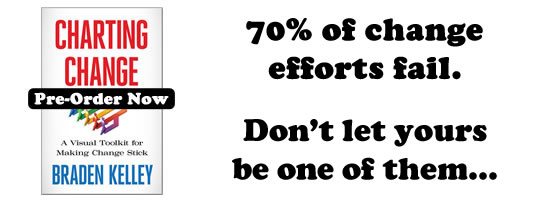Product Leadership: How Top Product Managers Launch Awesome Products and Build Successful Teams
 Product managers and innovators are the people in organizations that initiate, create, and launch awesome products customers love. Yet, to be truly successful, they need influence in the organization. They need to be leaders. To explore how product managers and innovators become leaders, I spoke with the co-author of the first book specifically written about product leadership.
Product managers and innovators are the people in organizations that initiate, create, and launch awesome products customers love. Yet, to be truly successful, they need influence in the organization. They need to be leaders. To explore how product managers and innovators become leaders, I spoke with the co-author of the first book specifically written about product leadership.
Richard Banfield wrote the book along with Martin Eriksson, the founder of ProductTank, and Nate Walkingshaw, Chief Experience Officer at Pluralsight. The title of the book is…
Product Leadership: How Top Product Managers Launch Awesome Products and Build Successful Teams.
More information about the book is available at https://productleadershipbook.com/.
The pre-publication version I was able to read was excellent and I’m looking forward to getting the final version when it is released in late May. This discussion with Richard will give you a preview and valuable insights for becoming a product leader.
Below is a summary of questions discussed followed by a link to the interview.
How do you contrast product managers from product leaders?
Many product managers don’t think of themselves as leaders. As product managers become more influential in delivering value to customers their role becomes more oriented towards leadership. Further, to guide, drive, and help the product team deliver value, you need to exhibit leadership qualities. We address the questions of what does it mean to be a good manager and what does it mean to be a good leader. Beyond a leader’s style, a key question is what are you connecting – are you connecting the product vision to the roles of team members, influencing the progress of the organization, etc.
How did the book come about?
The motivation for the book was curiosity. All three of the authors have a lot of experience creating products. My company alone has developed over 700 products, which has resulted in a massive knowledge. However, I began wondering if my experience was similar to others and what I was missing. I started asking others about their product development and management experiences – what they saw working and what didn’t work. Those conversations were the start of the book. The book is a reflection of what questions the profession is asking. It addresses the questions you’ll hear at a product conference or meetup. The content was formulated from interviews with 100 product leaders.
What does it take to be a great product leader?
The process for becoming a successful product leader will vary from person to person but there are some patterns of good product leaders. First, they are team players. They are good with human beings and bringing the best out of them. Next, you have to be a life-long learner. You also have to “embrace the suck.†There will be challenging times getting a product to market. Sometimes the work just sucks and you have to persevere. Leaders embrace these moments and working with the team to solve the challenges. They act and think team-first. Further, depending on the stage of the organization, they will have multiple hats (roles) to wear – they help where help is needed. The softer skills are also vital – writing, communicating, managing your time, negotiating, selling, persuading others with your ideas. Another key quality is “grace under fire†and being able to manage yourself well while leading others.
How to you become a product leader?
Creating vision is vitally important. It is easy to talk about but more difficult to achieve. A vision needs to be very clear and easy to deliver to others. This isn’t just a responsibility of an organization’s CEO; product leaders are getting involved in contributing to the organization’s vision and setting the product vision. Another area is process. Process is important and valuable but it can become dogma in an organization. Process can drive out creativity and problem-solving. Instead, I want to see product leaders talk in terms of frameworks than processes that become blindly followed without considering better options. Tools are in a similar vein. Tools should be amplifiers of our success. We should not be using tools to fix shortcomings. If you have a problem, a tool is not going to solve it. Tools should be used in areas where we are already doing well and a tool can make it even better. Tools should 10X what is good – our strengths – and make them great.
 Listen to the interview with Richard Banfield on The Everyday Innovator Podcast for product managers and innovators.
Listen to the interview with Richard Banfield on The Everyday Innovator Podcast for product managers and innovators.
image credit:Â amazon.com
Wait! Before you go…
Choose how you want the latest innovation content delivered to you:
- Daily — RSS Feed — Email — Twitter — Facebook — Linkedin Today
- Weekly — Email Newsletter — Free Magazine — Linkedin Group
 Chad McAllister, PhD is a product innovation guide, innovation management educator, and recovering engineer. He leads Product Innovation Educators, which trains product managers to create products customers love. He also hosts The Everyday Innovator weekly podcast, sharing knowledge from innovation thought leaders and practitioners. Follow @ChadMcAllister
Chad McAllister, PhD is a product innovation guide, innovation management educator, and recovering engineer. He leads Product Innovation Educators, which trains product managers to create products customers love. He also hosts The Everyday Innovator weekly podcast, sharing knowledge from innovation thought leaders and practitioners. Follow @ChadMcAllister
NEVER MISS ANOTHER NEWSLETTER!
LATEST BLOGS
Three things you didn’t know about credit cards
Photo by Ales Nesetril on Unsplash Many of us use credit cards regularly. From using them for everyday purchases to…
Read MoreFive CV skills of a business-minded individual
Photo by Scott Graham on Unsplash The skills listed on a CV help employers quickly understand your suitability for a…
Read More


